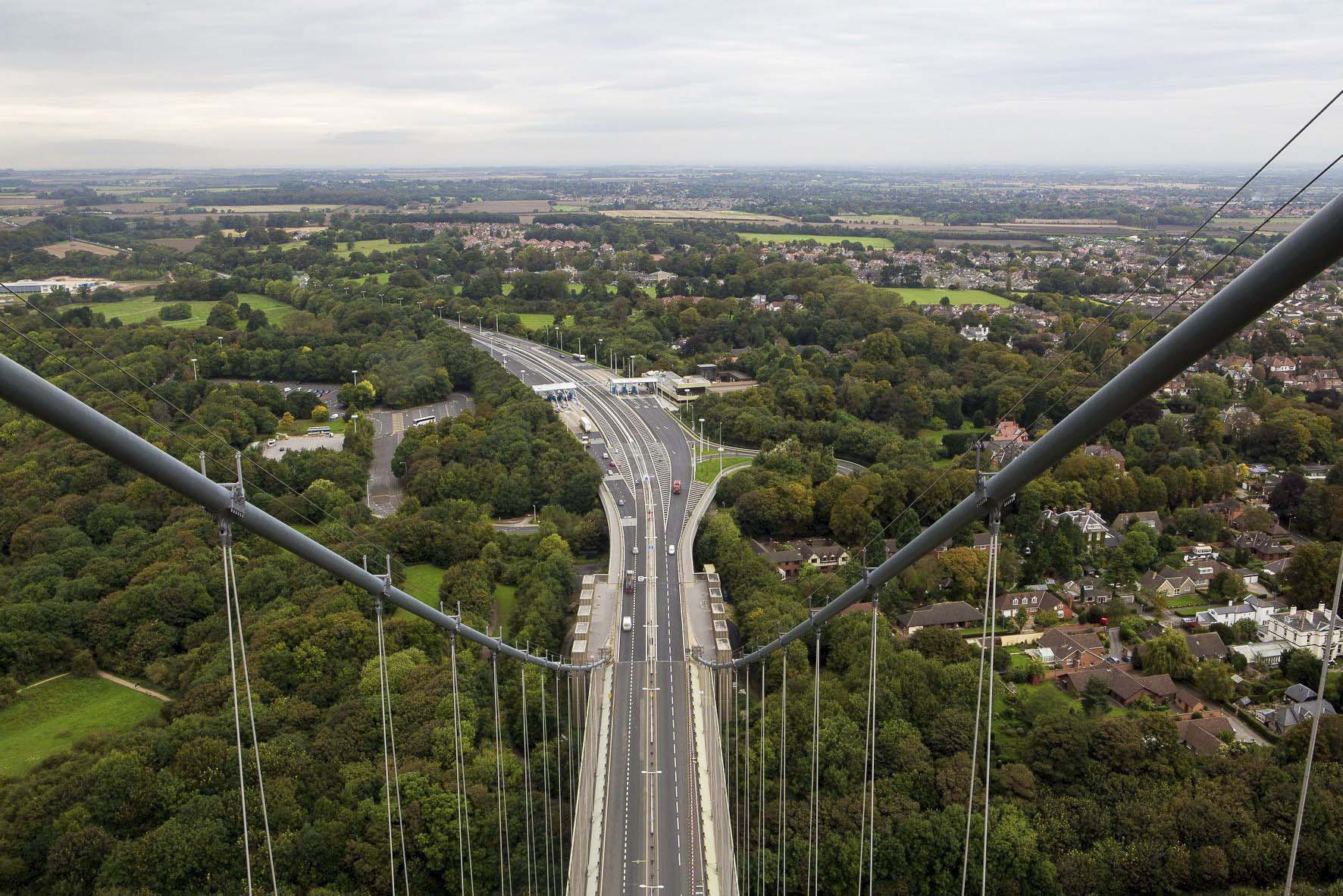
Cross that bridge…
40 years ago this year, the Humber Bridge was opened. It was the dawn of a new era, uniting in culture, business and employment both banks of the Humber Estuary…

Driven over the Humber Bridge lately? If so, you’re not alone. In fact, you’re among the 230,000,000 vehicles that have driven over it in the past 40 years. The hulking, grey, concrete landmark isn’t quite as architecturally reverent as, say, Lincoln Cathedral, but if its usage is an impressive figure then the commercial and economic benefit to both sides of the Humber since its creation is nothing short of incalculable.
Why and when was it created?
Prior to the opening of the bridge, the round trip from Grimsby to Hull was some 82 miles. The creation of a bridge or tunnel would reduce that to about half. Unfortunately the loose sediment – about 1.26m tonnes of sediment from the Holderness Coast boulder clay cliffs is present in the estuary at any time – means the estuary has a shifting bed and so construction of a tunnel or conventional bridge would be tricky.
It’s about 14km across at its widest point, covers 75,492 acres in total and the water is about 6.5 metres deep on average. About 40,000 ships pass through the estuary each year, and its ports handle about 14% of the UK’s international trade, so an unobstructed navigable channel was essential.
A suspension bridge was proposed and granted permission in 1959 with the passing of the Humber Bridge Act, which also created the board. Work began in 1972 and up to 1,000 workers at a time took eight years to create the structure. Traffic first crossed the bridge on 24th June 1981 and the bridge was officially opened by HM The Queen on 17th July 1981. In 2017, the bridge was awarded Grade I listed status by Historic England, having been the world’s longest single-span suspension bridge for its first 16 years. It’s still the world’s eighth longest suspension bridge.
So, what is it?
From the south bank to the Barton Side Span is 530 metres. From the Hessle Side Span to the North Bank is 280 metres. The centre span is 1,140 metres long, and in total the bridge is 2,200 metres (1.4 miles) long.
The Humber Bridge was the first to use hollow reinforced concrete towers to suspend the cables, rather than steel ones. British Bridge Builders, Clugston of Scunthorpe and Costain Civil Engineering created the southern (i.e.: Lincolnshire) approach road first, and then the towers were slipformed – the term for the continuous pouring of wet concrete – 155 metres tall and 36mm further apart at the top to compensate for the Earth’s curvature.
Cable spanning took place from 1977 to 1979. Underground are the anchorages; two on each side of the bridge, on the north and south shores. These are enormous concrete shoes into which 14,948 individual wires are anchored. These are splayed out from the shoes and eventually form the seven-metre round cables which are compacted and coated with lead paste and painted to prevent corrosion. The same thin cable was spun back and forth and in total, there’s enough wire to wrap around the moon six times. Each cable can cope with up to 19,400 tonnes of weight.
The roadway is more correctly referred to as the ‘deck’ and is made up of 124 box sections 140 tonnes in weight; over 17,000 tonnes in total. These are shaped like an aeroplane wing to channel wind and enables the bridge to flex three metres in high winds. The deck is 30 metres above the water.
Money, money, money…
Some have questioned why, after 40 years, it’s still necessary to charge a toll for crossing the bridge. Well, for a start there’s an eye-watering amount of ongoing maintenance to keep the structure healthy, and 100 staff are employed at the 20-acre Hessle-side bridge operations centre.
Construction costs rose from £98m to £151m (£592m today), and the cost of building the bridge is still being paid back today. As of 2019/20 accounts, £130,382,608 was still outstanding – including interest of about £7m a year – and it’s hoped that with restructuring of the finance e.g.: the reduction of tolls, which was called for by the Hull Daily Mail and Grimsby & Scunthorpe Telegraphs, with their 81,000 signature petition – the local economy could grow by £1.1bn over the next 20 years, easily swallowing up the remaining debt.
Ongoing maintenance work will include the refurbishment of the A-frames which will necessitate temporary measures being installed on the frames this year until work is completed in 2026.
Happy Birthday Humber Bridge
Curiously, plans to celebrate the Humber Bridge have been quite low key, and there’s a reason for that. 2021 saw the Bridge Board close the structure’s footways, later putting in place restrictions with set opening times. That’s because over 200 people have fallen or jumped from the bridge in its history, with just five surviving. The Bridge Board is also frustrated by attempts by such groups as ‘Night Scape’ to climb the structures illegally, clearly putting not just their own lives but those of the emergency services at risk. Celebrations, therefore, have been kept deliberately low key for reasons of sensitivity to a spate of incidents in April and because of Covid.
Nonetheless the Board is currently looking through a range of 40th anniversary murals submitted by local schools on the theme of ‘what the bridge means to me.’ Each month, too, there’s a photographic competition with different themes; October’s is Halloween, for example.
In 2022, if and when volumes of traffic return to normal levels, it’s estimated that 10,000,000 vehicles will use the bridge, which has become critical infrastructure in uniting the south and north banks economically and culturally, facilitating trade, employment and tourism. The bridge is now a third of the way into its operational life. Quite what its future holds after that time remains to be seen… perhaps we’ll just have to cross that bridge when we come to it.
The Humber Bridge in Numbers…
To date, over 230 million vehicles have crossed the estuary using the Humber Bridge
- The creation of the Humber Bridge cut the journey time from 82 miles down to 42 miles.
- The bridge cost £151m in 1981, which is the equivalent of £592m today.
- At the peak of construction, 1,000 workers were involved in creating the structure.
- The bridge is made up of three spans; Hessle span (280 metres), Barton span (530 metres) and the main centre span (1,410 metres) making a total of 2,200 metres or 1.4 miles.
- The road deck, which is made up of 124 steel box sections weighing over 17,000 tonnes, is designed as an upside-down aircraft wing, to keep the deck stable during high winds.
- In February 2002, the 100 millionth vehicle crossed the bridge as part of the six million crossings that year. The bridge is now carrying more than 10 million vehicles every year.






